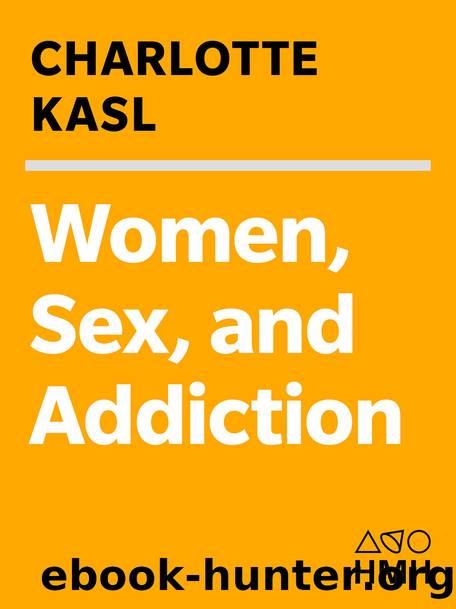Women, Sex, and Addiction by Charlotte Kasl

Author:Charlotte Kasl
Language: eng
Format: epub
Publisher: Houghton Mifflin Harcourt
VIOLENCE AND ADDICTION
If we remember that shame, stemming from dysfunctional core beliefs, is the foundation for addictive personalities, we can understand the role of violence in addiction. When people experience the emptiness underlying their negative core beliefsâIâm not lovable, life is hopelessâthey feel shame and seek an escape. For some, an outburst or violent action provides an instant escape from feelings of shame. The cycle goes as follows: (1) precipitating event: feeling rejected, making a mistake, or feeling lonely; (2) a negative core belief touches consciousness: âIâll never be happyâ; âIâm unlovableâ; (3) shame overwhelms the system: âIâm so bad I should dieâ; âThis pain is intolerableâ; (4) the person seeks an escape from these deathlike feelings of shame. One form of distraction is through violence toward self or others. Violence can be turned outward by blaming, shaming, or physically harming and sexually using another person. Or it can be turned inward with a cut to the arm or a burn on the skin that provides a wake-up jolt or a distraction from the feeling of being swallowed up or âdyingâ from shame. Some women do this in a trance and hardly feel anything at all. Food, alcohol, and drugs can work the same way. You deflect the emptiness and underlying fear to something more manageable. A hangover or stomachache is preferable to feelings of despair and loneliness. It is important to remember that a positive intention underlies self-abuse. You simply do not know any other way to deal with or escape your terrifying feelings.
There is a paradox to self-violence in that you hurt yourself both to block out feelings and to achieve some sort of body sensation. The sensation feels good and reminds you that you are alive, even as you are trying to escape from life. In a shame-based person, the cycle escalates: âI feel rotten when someone says something cuttingâ becomes âI always wake up feeling rotten.â Eventually no precipitating event is required; the self-hate is constant.
Addictive behavior keeps shame constantly recycling, and the shame increases the tendency toward violence. Many of the women interviewed engaged in some form of violence or self-abuse in their sexually addictive relationships. For some, violence became another addiction. âIt took increasingly more and more violence to get âhigh,â to become sexually aroused, or to feel anything at all.â
Remember the addiction cycle? Eventually, harmful consequences jolt people out of denial, and the more intense and long-standing the addiction, the stronger the jolt must be. The woman who goes out at night to get a lid of dope and finds herself against a wall with a knife at her throat may well be jolted out of her addictive sleep into consciousness. The female victim in a sadomasochistic relationship who ends up in the hospital with lacerations that require stitches wakes up and asks, âWhat am I doing to myself?â The woman who attempts suicide to get attention comes to and suddenly realizes she could have died. Violence and pain are often part of
Download
This site does not store any files on its server. We only index and link to content provided by other sites. Please contact the content providers to delete copyright contents if any and email us, we'll remove relevant links or contents immediately.
Rewire Your Anxious Brain by Catherine M. Pittman(17608)
Talking to Strangers by Malcolm Gladwell(11927)
The Art of Thinking Clearly by Rolf Dobelli(8882)
Mindhunter: Inside the FBI's Elite Serial Crime Unit by John E. Douglas & Mark Olshaker(7860)
Becoming Supernatural by Dr. Joe Dispenza(7131)
Change Your Questions, Change Your Life by Marilee Adams(6675)
The Road Less Traveled by M. Scott Peck(6661)
Nudge - Improving Decisions about Health, Wealth, and Happiness by Thaler Sunstein(6651)
The Lost Art of Listening by Michael P. Nichols(6496)
Enlightenment Now: The Case for Reason, Science, Humanism, and Progress by Steven Pinker(6425)
Win Bigly by Scott Adams(6334)
Mastermind: How to Think Like Sherlock Holmes by Maria Konnikova(6264)
The Way of Zen by Alan W. Watts(5818)
Daring Greatly by Brene Brown(5669)
Grit by Angela Duckworth(4753)
Big Magic: Creative Living Beyond Fear by Elizabeth Gilbert(4743)
Men In Love by Nancy Friday(4355)
Flow by Mihaly Csikszentmihalyi(4072)
The Four Tendencies by Gretchen Rubin(4035)
